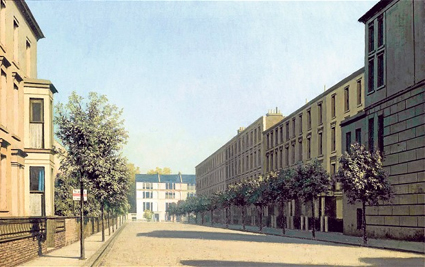"The Peculiarity of Algernon Newton", at Daniel Katz Gallery.
Algernon Newton has been largely forgotten since his death in 1968, but at his best he was one of the most compellingly original English artists of the twentieth century. A new exhibition at Daniel Katz Gallery, the first significant display of Newton’s work for more than thirty years, offers a rare opportunity to see the full range of his work, both as a painter and a vigorously fresh sketcher in oils.
Newton, who came to a rather late maturity in the 1920s, deserves to be remembered above all as a painter of London. There is a disconcerting poetry to many of his painstakingly precise views of the city, a visual equivalent to the powerful sense of sadness and loss that pulses through T.S. Eliot’s verse of a few years earlier. "Let us go, through certain half-deserted streets, / The muttering retreats / Of restless nights in one-night cheap hotels", Eliot had written, in 1917, in The Love Song of J. Alfred Prufrock. With pictures such as Canal Basin, of 1929, Newton might almost be the melancholy Prufrock’s appropriately alienated companion, come late to the scene of his musings. From a rough patch of canalside wasteland, the painter surveys a scene of stilled desolation. He notes the peeling, yellowed, damp-dappled stucco of the back of a Regency townhouse. He studies a line of shadowy washing strung up in the yard of what was once a dockside warehouse, now evidently adapted to low-rent housing. He looks across an expanse of canal to more warehouses and into a middle distance where a factory chimney puffs its smoke desultorily into the sky, and where a dead tree is doubled, by its own reflection, in a dead patch of water.
Other London pictures are lighter in...


